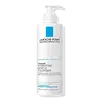What's inside
What's inside
 Key Ingredients
Key Ingredients

 Benefits
Benefits

 Concerns
Concerns

No concerns
 Ingredients Side-by-side
Ingredients Side-by-side

Water
Skin ConditioningSodium Cocoyl Glycinate
CleansingSodium Taurine Cocoyl Methyltaurate
CleansingPotassium Olivate
EmulsifyingSorbitol
HumectantCeramide NP
Skin ConditioningCeramide EOP
Skin ConditioningCeramide AP
Skin ConditioningCeramide As
Skin ConditioningCeramide Ns
Skin ConditioningCentella Asiatica Extract
CleansingSodium Hyaluronate
HumectantTuber Magnatum Extract
Skin ConditioningPhosphatidylcholine
EmulsifyingHydrogenated Lecithin
EmulsifyingAscorbyl Palmitate
AntioxidantTocopherol
AntioxidantLactobacillus/Soymilk Ferment Filtrate
Skin ConditioningSaccharomyces Ferment Lysate Filtrate
Skin ConditioningBifida Ferment Filtrate
Skin ConditioningBifida Ferment Lysate
Skin ConditioningLysine
Skin ConditioningHistidine
HumectantArginine
MaskingAspartic Acid
MaskingThreonine
Serine
MaskingGlutamic Acid
HumectantProline
Skin ConditioningGlycine
BufferingAlanine
MaskingValine
MaskingIsoleucine
Skin ConditioningLeucine
Skin ConditioningTyrosine
MaskingPhenylalanine
MaskingC12-13 Alkyl Lactate
EmollientCitric Acid
BufferingDisodium EDTA
Maltooligosyl Glucoside
Skin ConditioningHydrogenated Starch Hydrolysate
HumectantSodium PCA
HumectantGlycerin
HumectantButylene Glycol
HumectantWater, Sodium Cocoyl Glycinate, Sodium Taurine Cocoyl Methyltaurate, Potassium Olivate, Sorbitol, Ceramide NP, Ceramide EOP, Ceramide AP, Ceramide As, Ceramide Ns, Centella Asiatica Extract, Sodium Hyaluronate, Tuber Magnatum Extract, Phosphatidylcholine, Hydrogenated Lecithin, Ascorbyl Palmitate, Tocopherol, Lactobacillus/Soymilk Ferment Filtrate, Saccharomyces Ferment Lysate Filtrate, Bifida Ferment Filtrate, Bifida Ferment Lysate, Lysine, Histidine, Arginine, Aspartic Acid, Threonine, Serine, Glutamic Acid, Proline, Glycine, Alanine, Valine, Isoleucine, Leucine, Tyrosine, Phenylalanine, C12-13 Alkyl Lactate, Citric Acid, Disodium EDTA, Maltooligosyl Glucoside, Hydrogenated Starch Hydrolysate, Sodium PCA, Glycerin, Butylene Glycol
 Reviews
Reviews

Ingredients Explained
These ingredients are found in both products.
Ingredients higher up in an ingredient list are typically present in a larger amount.
Ceramide NP is a type of ceramide.
Ceramides are intercellular lipids naturally found in our skin that bonds dead skin cells together to create a barrier. They are known for their ability to hold water and thus are a great ingredient for dry skin.
Ceramides are an important building block for our skin barrier. A stronger barrier helps the skin look more firm and hydrated. By bolstering the skin ceramides act as a barrier against irritating ingredients. This can help with inflammation as well.
If you would like to eat ceramides, sweet potatoes contain a small amount.
Read more about other common types of ceramides here:
Ceramide AP
Ceramide EOP
Disodium EDTA plays a role in making products more stable by aiding other preservatives.
It is a chelating agent, meaning it neutralizes metal ions that may be found in a product.
Disodium EDTA is a salt of edetic acid and is found to be safe in cosmetic ingredients.
Learn more about Disodium EDTAGlycerin is already naturally found in your skin. It helps moisturize and protect your skin.
A study from 2016 found glycerin to be more effective as a humectant than AHAs and hyaluronic acid.
As a humectant, it helps the skin stay hydrated by pulling moisture to your skin. The low molecular weight of glycerin allows it to pull moisture into the deeper layers of your skin.
Hydrated skin improves your skin barrier; Your skin barrier helps protect against irritants and bacteria.
Glycerin has also been found to have antimicrobial and antiviral properties. Due to these properties, glycerin is often used in wound and burn treatments.
In cosmetics, glycerin is usually derived from plants such as soybean or palm. However, it can also be sourced from animals, such as tallow or animal fat.
This ingredient is organic, colorless, odorless, and non-toxic.
Glycerin is the name for this ingredient in American English. British English uses Glycerol/Glycerine.
Learn more about GlycerinTocopherol (also known as Vitamin E) is a common antioxidant used to help protect the skin from free-radicals and strengthen the skin barrier. It's also fat soluble - this means our skin is great at absorbing it.
Vitamin E also helps keep your natural skin lipids healthy. Your lipid skin barrier naturally consists of lipids, ceramides, and fatty acids. Vitamin E offers extra protection for your skin’s lipid barrier, keeping your skin healthy and nourished.
Another benefit is a bit of UV protection. Vitamin E helps reduce the damage caused by UVB rays. (It should not replace your sunscreen). Combining it with Vitamin C can decrease sunburned cells and hyperpigmentation after UV exposure.
You might have noticed Vitamin E + C often paired together. This is because it is great at stabilizing Vitamin C. Using the two together helps increase the effectiveness of both ingredients.
There are often claims that Vitamin E can reduce/prevent scarring, but these claims haven't been confirmed by scientific research.
Learn more about TocopherolWater. It's the most common cosmetic ingredient of all. You'll usually see it at the top of ingredient lists, meaning that it makes up the largest part of the product.
So why is it so popular? Water most often acts as a solvent - this means that it helps dissolve other ingredients into the formulation.
You'll also recognize water as that liquid we all need to stay alive. If you see this, drink a glass of water. Stay hydrated!
Learn more about Water